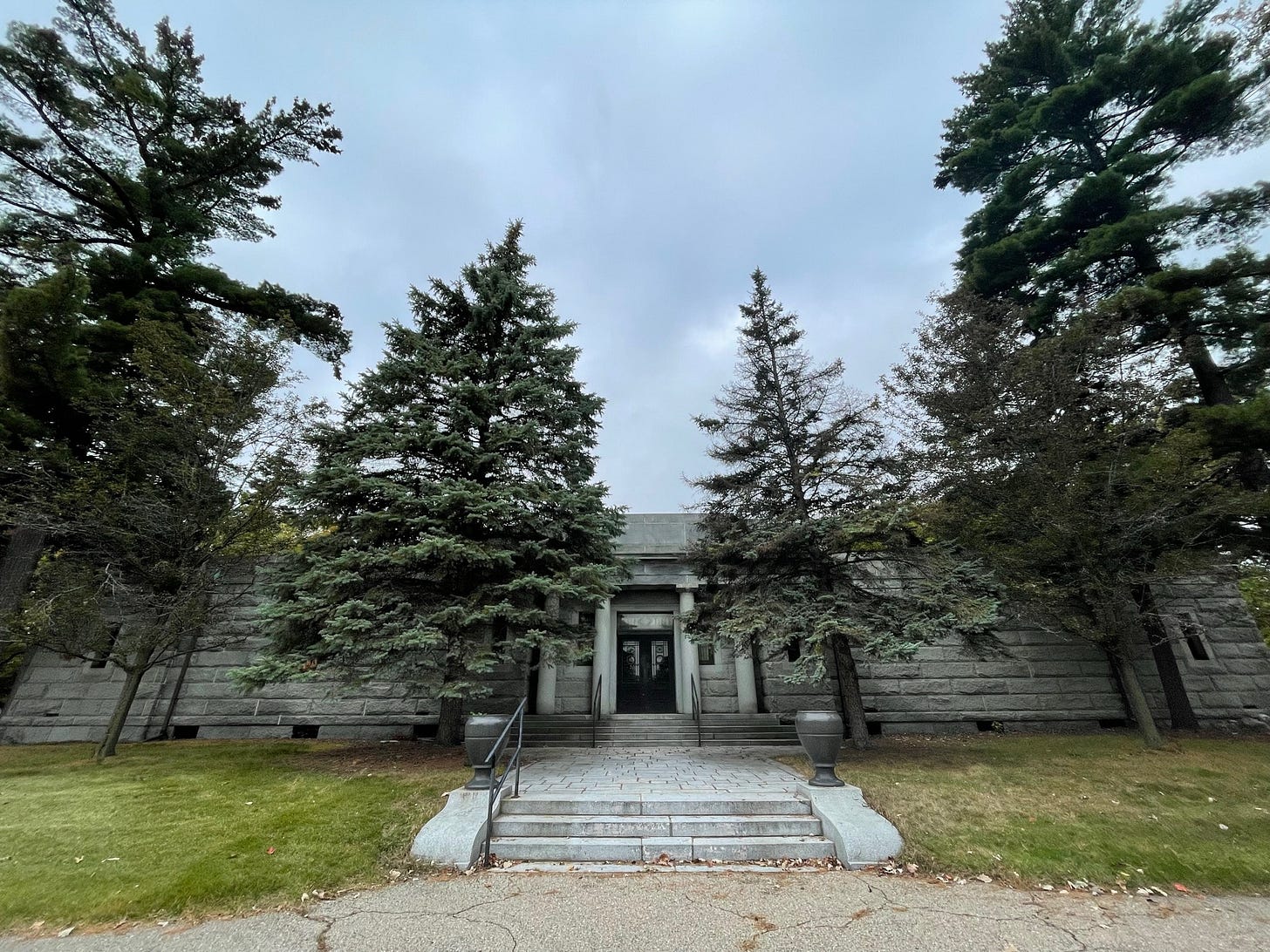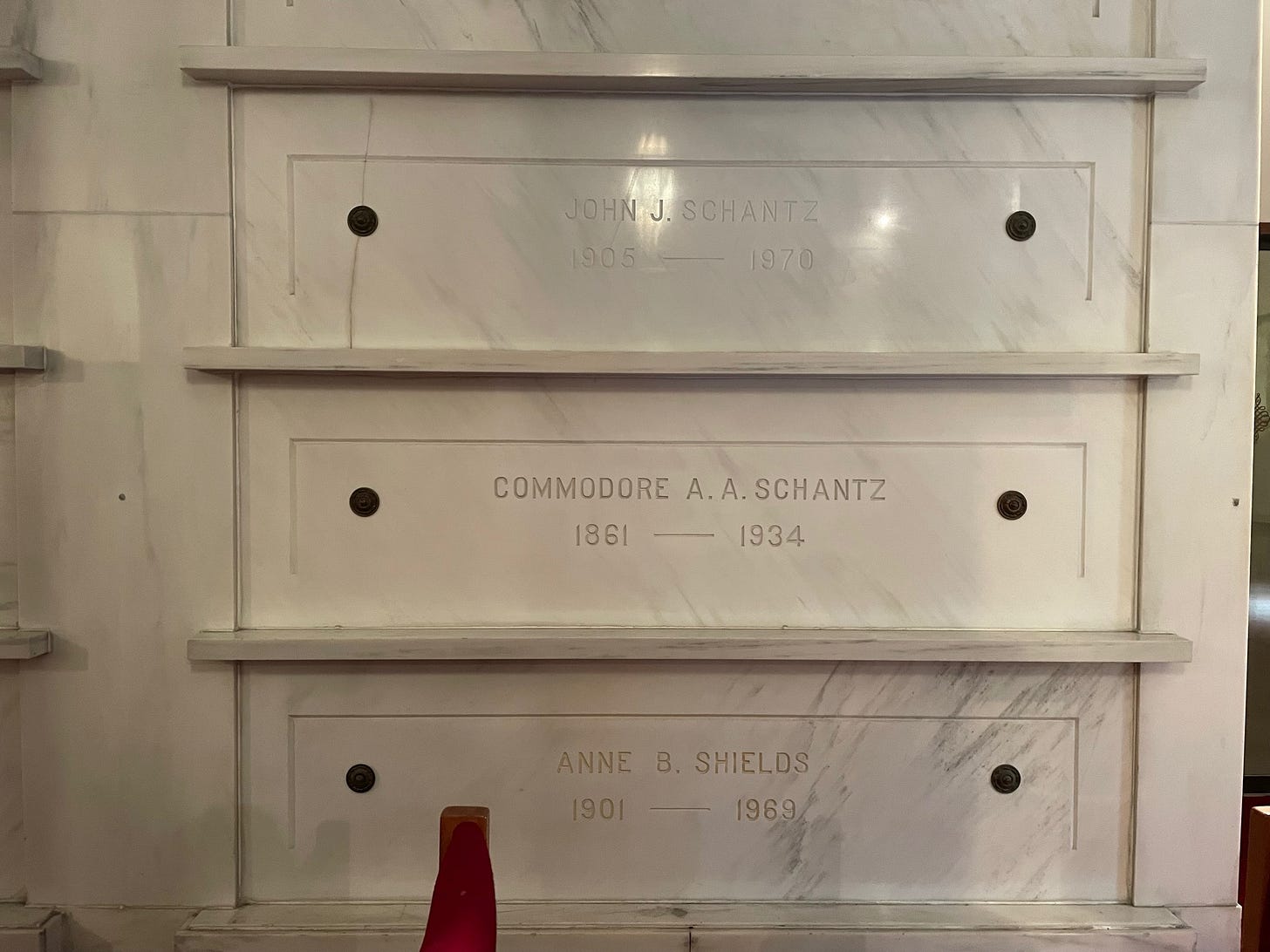In the spring of 1912, 18-year-old William John Mellors took a train from London to Southampton, England, where he boarded a ship bound for New York City to start his adult life.
“Now mother I hope you will not worry over me as I am sure I shall arrive in New York quite safe & then I shall get on,” he wrote in a postcard sent from on board the R.M.S. Titanic.
Mellors, a second-class passenger, survived the wreck — through freak luck, it seems, to read his horrifying account of it. Blown from the deck by an apparent explosion, Mellors made it, somehow!, to a half-submerged lifeboat, whose passengers mostly froze or drowned before it was rescued.
Feet frostbitten, nerves shot, enough nightmarish trauma endured for a lifetime, Mellors recuperated in New York, his home for most of the next 16 years.
Then, in 1935, Mellors moved to Detroit — for a job at the anti-Communist magazine “The National Republic.” (There’s a rabbit hole we’ll have to travel down another day.) He would eventually become its editor. He lived with his family in Highland Park until his death in 1948.
A few years ago, I was contacted by a Titanic researcher based in England who was mapping Titanic-related history sites worldwide, including gravesites of survivors. How close was I to Evergreen Cemetery, he asked? Less than a mile away is the answer, and moreover, it turns out that I have a thing about mausoleums, and a gravesite scavenger hunt was just the push I needed to pop in to see the oldest public mausoleum in Detroit.1
Evergreen Mausoleum opened its doors at the cemetery of the same name in 1921. Designed by architect Frank W. Hall, about which I know absolutely nothing, it cost $200,000 to construct (about $3 million today). A second wing of the mausoleum was built in 1929, and the whole project, with a total of 1,308 crypts, was formally dedicated in 1930. The sales pitch for spending eternity at Evergreen Mausoleum was typical of the era: an appeal to the dignity — purity, even — of above-ground repose, of climate control and state-of-the-art ventilation (always, much detail about ventilation technology), of “perfect desiccation” instead of dirt and worms.
Inside of Evergreen Mausoleum, it is cold, and the air smells like stone and Glade stick-ons. If you have bronchitis, the sound of your coughs will bounce off of every snow-white marble wall for like a full 20 seconds. There’s some half-assed statuary, gorgeous light fixtures, pretty stained glass, and red carpeting down the main corridor that in my humble opinion really needs to go.
Reviewing my notes from my visit yesterday I find an accidental nautical thread running through them. Architect George DeWitt Mason is interred at Evergreen: The “dean of Detroit architects,” he taught Albert Kahn and designed a lot of biggies and baddies in Michigan architectural history. Consider: the (the) Masonic Temple, the Grand Hotel on Mackinac Island, the log cabin at Palmer Park, the Gem Theatre and, a late personal obsession of mine (more to come on this soon), the demolished Detroit College of Law. But what’s so nautical about George Mason?
He was the architect of the Detroit Yacht Club, dedicated in 1923.
Speaking of the Detroit Yacht Club, and also deans, let’s talk about Commodore Arnold Augustus Schantz, the “dean of Great Lakes yachtsmen,” the Detroit Free Press called him in a front-page obituary upon his death in January 1934. Schantz was born in 1861 in Galion, Ohio, and was still a kid when he took a job as a grocery boy “working Saturdays for 25 cents per day.” He changed careers at 14 years old when he became the Mansfield, Ohio agent for the Cincinnati newspapers.
Schantz took “the first vacation of his life” when he was 19, traveling by boat from Cleveland to Mackinac Island, where he camped for a week. The trip turned him into “a devotee of the lakes,” the Free Press reported. When he got home, he wrote the Detroit & Cleveland Navigation Company to inquire about reserving a boat to bring a group of his friends back up to Mackinac. Somehow, he spun this into a job at D&C as a traveling agent and promoter for the passenger steamship line. Schantz became president of the company in 1919.
But Schantz was especially well-known as a yachtsman and a promoter of Detroit’s dominant power boat racing scene in the 1910s and ‘20s, becoming commodore of the Miss Detroit Gold Cup association in 1915, a position he held until his death. Schantz was also instrumental in the construction of the Detroit Yacht Club’s current clubhouse on Belle Isle, as chair of the club’s building committee in 1922.
Yachting may not be the first thing that comes to mind when you think about Aaron and Helen DeRoy. Aaron and Helen were from Pittsburgh, where Aaron made a fortune as a Studebaker dealer (he was the first Jewish person to own a car dealership, according to the Jewish Historical Society of Michigan). (Helen, the daughter of an oil baron, was already rich when they married.) In 1923, the DeRoys moved to Detroit, where Aaron continued to distribute automobiles through his company, the Aaron DeRoy Motor Co.
The DeRoys were major philanthropists, within and beyond Detroit’s Jewish community. You may have guessed this, since their names are on all kinds of things, including the Helen L. DeRoy Auditorium at Wayne State University and Aaron DeRoy Hall at the Dossin Great Lakes Museum. A $10,000 donation from the DeRoys purchased the first two giraffes at the Detroit Zoo.
But Aaron was also a commodore of the Detroit Yacht Club, as well as a devoted power boat racer and the owner of a yacht called “Yoreda” (A. DeRoy, backwards). He was on his way to yacht races in Miami in 1935 when he was killed in a car accident. Helen took over the dealership business, established a family foundation, and continued to generously support a bunch of cultural and community institutions, including the Jewish Community Center, Jewish summer camps, the Detroit Symphony Orchestra, and Wayne State. She died in 1977 at the age of 95.
The door of their private crypt at Evergreen is delightfully maritime!
That’s enough for one mausoleum visit, but you know there will be more! (Though I will try not to make the Little Detroit History Letter too mausoleum-intensive.)
A couple of links worth your time
Let’s not lose this ballroom y’all. Via Library of Congress.
Speaking even more of maritime history: I really hated to hear today that the Michigan DNR is considering demolishing the Belle Isle Boat House. Here are more details on what you can do if you also hate that idea. I wrote about the history of the building and what it would mean to lose it for Crain’s last year.
This is just smart: Aaron Mondry of The Dig asked Detroit architects to talk about their favorite buildings. Not a Penobscot among them!! (With due respect to the Penobscot, et al.)
Housekeeping: I don’t know if anyone cares at all when or how often I send this newsletter, but consider this your double issue for Oct. 15 & Oct. 22. This weekend I’m sending myself on an outstate cemetery assignment for you all to enjoy Oct. 29.
OK, only sort of; it took me five years to do this, lol.








